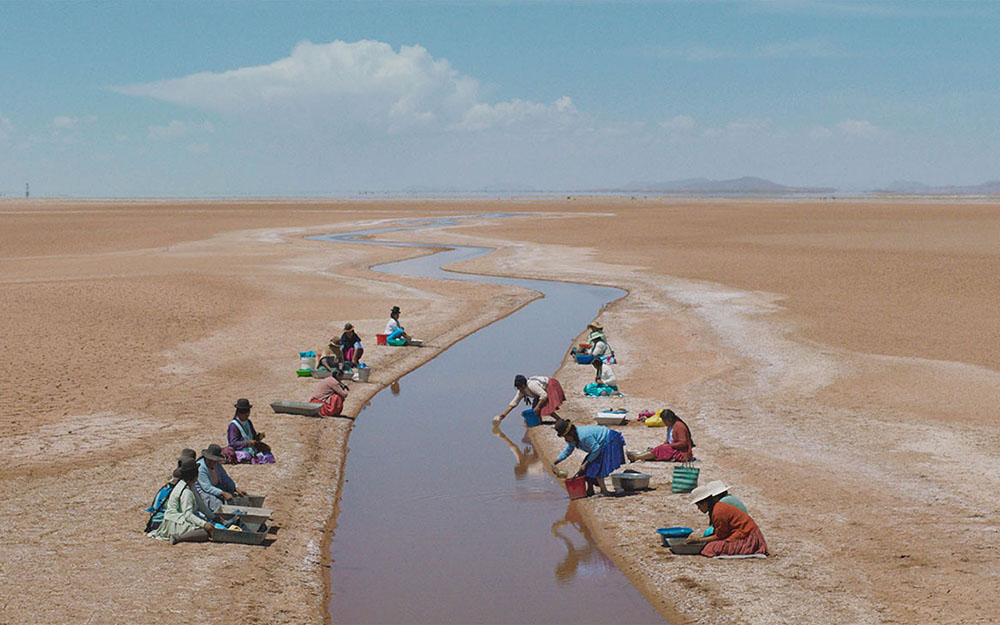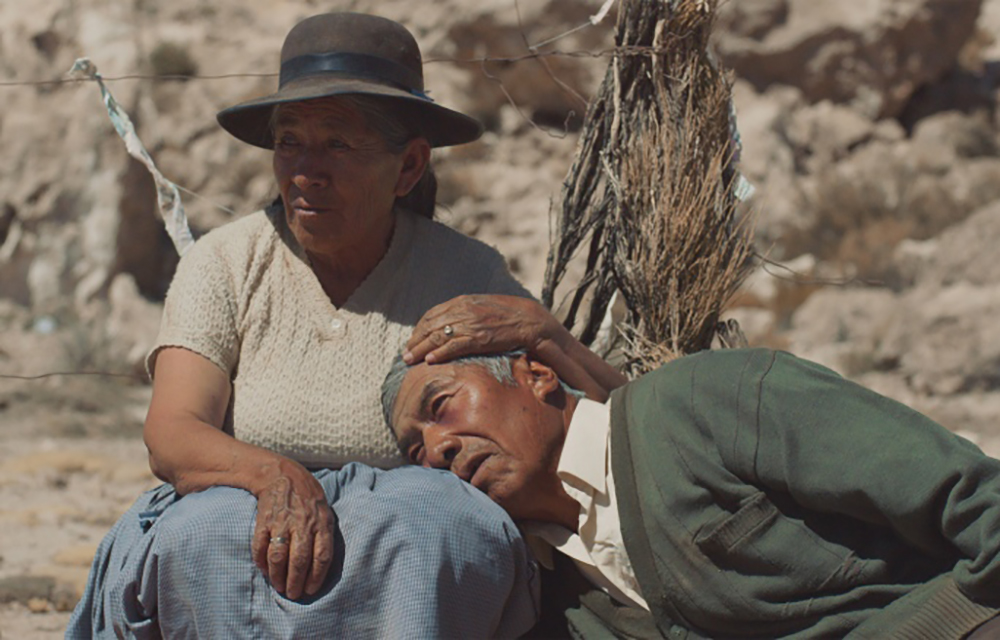The film starts with a man walking towards the sunset. Like many images, it’s full of symbolism. In the next scene, we understand that it’s an older man on the sunset of his life; his name is Virginio. He and his wife, Sisa, live a quiet life in the dry land of the Bolivian Altiplano. Each had their own tasks that they redo each day of their lives. While Virginio oversees taking care of the llamas, Sisa washes the clothes, makes dinner, and goes to the village to pick water from the well. One day the well wakes up dry, and the only way to acquire water is by going to a faraway river. This leads to the antagonist force of the film, an unusually long drought that has forced many people to flee to the city.
Conditions that Get Worse and Worse
Virginio is a stubborn man; he doesn’t want to abandon his home or help Sisa with her tasks. After a long day walking to bring water from the river, Sisa asks Virginio for help. He basically replies that he’s in charge of the llamas and that her job is to bring the water. Each day the conditions to live in their home get worse. Then, unexpectedly, their grandson visits them. His motives are unclear from the beginning, but he’s trying to convince them to move to the city. In Virginio’s head, that’s not an option. He has his home, and he’s very confident that the drought will be over soon; in several scenes, he affirms: “the rain is coming.”
Sisa, on the other hand, is shy and silent. Her husband doesn’t take her feelings into consideration, but still, she continues doing her daily tasks. There’s also a feeling of respect and mutual love. The couple tries to survive by keeping up with their routines. Compared with her husband, Sisa is more understanding and has a closer relationship with her grandson. However, as the film progresses, her character demands more of her husband. She’s no longer submissive and pleasing to whatever her husband decides.
One of the best aspects of “Uatma” is the photography. Many wide shots serve to establish the dryness and inhospitality of the place. Apart from the few humans living in that area, the only other forms of life presented are the llamas and the condor. The latter becomes another strong symbolism in the movie, as Virginio explains to his grandson that the condor kills itself when it feels its life is useless. The close shots emphasize the intimate aspect of the story and the deterioration of the quality of life.

Climate Change as a Crucial Theme
The crucial theme in the film is how climate change has affected the lives of the Quechua community. In a few scenes, the characters mention that most people who lived in that place have relocated to the city. Each day the drought continues to limit their water supplies, and on top of that, most of them are older people with physical limitations. In one of the scenes, several people in the community go to the mountains to look for water, and although they find water, there’s the realization that the mountain is no longer covered in ice. Another scene presents the community having a spiritual ritual to manifest the rain. Invoking spiritual intervention feels like a last resort option for a community slowly losing hope.
“Utama” is visually stunning, full of excellent performances, and provides a necessary reflection on climate change. But ultimately, it’s a love story. Love for the land, the family, the traditions, and of course, love between the main characters. The last shot is perfect for this film, as it exposes the unpredictability of nature and how helpless humans can be when facing the natural world. I consider “Utama” another gem of Latin American Cinema that’s a must-watch for everyone.
This review was written from day 7 of Sundance Film Festival’s 2022 programming.
Support the Site: Consider becoming a sponsor to unlock exclusive, member-only content and help support The Movie Buff!


